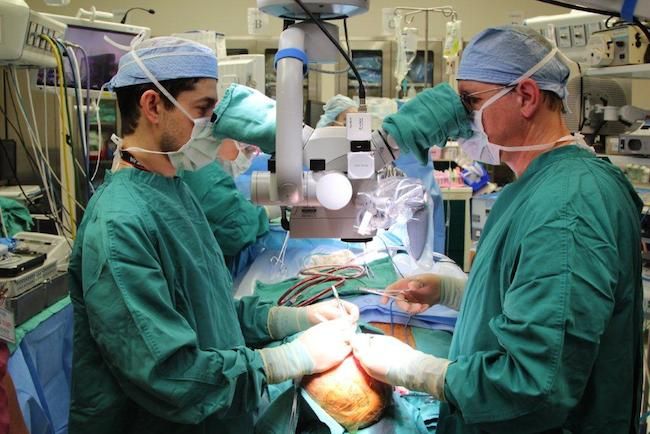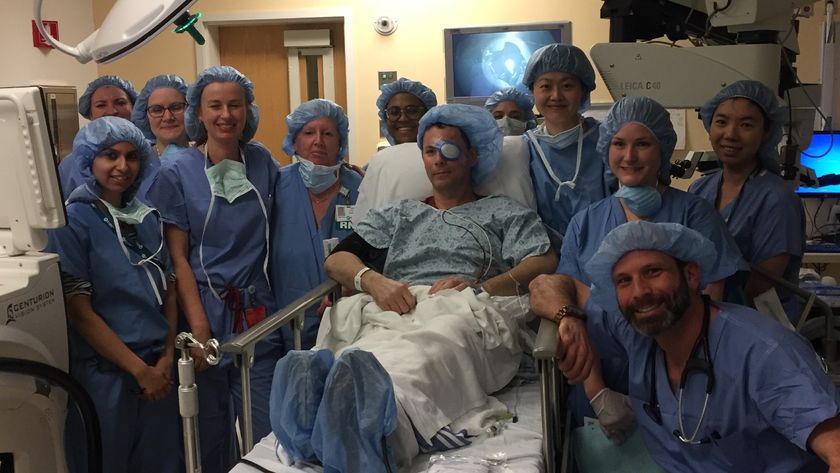Incredible Surgery Gives Man New Lease on Life

Getting a kidney transplant is a big deal. Getting a pancreas transplant is a big deal. But getting a kidney and a pancreas transplant while simultaneously undergoing a scalp and skull transplant — that was unheard of until very recently.
Last month, doctors in Texas performed the first-ever multi-organ transplant paired with the transplant of a skull and scalp tissue, according to MD Anderson Cancer Center. The patient — James Boysen, a 55-year-old software developer from Austin, Texas — was diagnosed with a rare cancer called leiomyosarcoma in 2006. This cancer affected the muscles under his scalp, and although doctors successfully treated the disease with chemotherapy and radiation, Boysen was left with a large, deep wound in both the skin and the bone on top of his head.
In addition to needing surgery to repair his scalp and skull, Boysen needed a new kidney and pancreas. Diagnosed with diabetes at age 5, he had received kidney and pancreas transplants in 1992, but his doctors recently determined that he would again need new organs. [The 9 Most Interesting Transplants]
However, Boysen's doctors were faced with a dilemma: The wound on Boysen's head made a new transplant of his internal organs impossible. A wound makes a patient vulnerable to infection, said Dr. Jesse Selber, an associate professor of plastic and reconstructive surgery at MD Anderson Cancer Center in Houston and one of the surgeons who performed Boysen's multiple transplants.
"A preexisting wound, especially one of that magnitude, is a major risk for infection," Selber told Live Science. "There's a general rule that if there's a major wound, you don't want to perform a transplant."
But Boysen's doctors also feared that fixing the wound (by performing reconstructive surgery on Boysen's head) would send his already-weakened internal organs into a tailspin.
"It was a little bit of a catch-22. He was really of marginal health status because he had two major organs failing, said Selber, adding that a surgery to fix the wound could have resulted in kidney failure, which was a risk that Boysen was not willing to take.
Sign up for the Live Science daily newsletter now
Get the world’s most fascinating discoveries delivered straight to your inbox.
The doctors eventually made a decision about how to treat their patient. Rather than treating the two issues (the scalp wound and the failing organs) separately, they decided to combine all the necessary transplants into one operation — a highly complicated surgery using organs and tissues from a single donor, Selber said.
More than 50 health care professionals were involved in the procedure, which took 15 hours to complete. Boysen received two new organs — a kidney and a pancreas — as well as the much-needed skull bone and scalp tissue.
"The coordination of care was really complicated. We had to coordinate multiple surgical teams from different hospitals doing things we've never done before. And that, in and of itself, has risks," Selber said.
Of course, there was also the risk that Boysen wouldn't survive the surgery, but Selber said the patient is "sailing through" his recovery. There's still a chance that Boysen could reject some of his new parts, but Selber said doctors will continue monitoring him carefully and adjusting his immunosuppressant medications as needed to decrease the risk of that happening.
Follow Elizabeth Palermo @techEpalermo. Follow Live Science @livescience, Facebook & Google+. Original article on Live Science.

Elizabeth is a former Live Science associate editor and current director of audience development at the Chamber of Commerce. She graduated with a bachelor of arts degree from George Washington University. Elizabeth has traveled throughout the Americas, studying political systems and indigenous cultures and teaching English to students of all ages.












